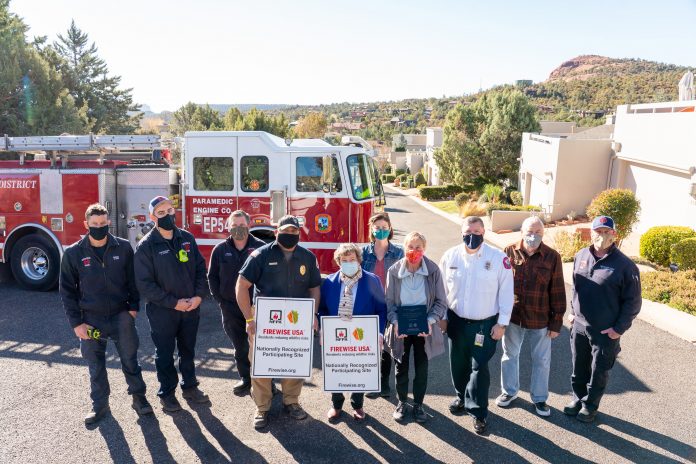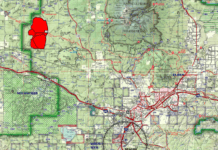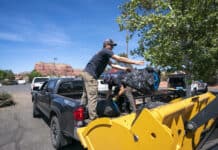
Catherine Knox is excited that she and her neighbors are the only one of their kind in Sedona. But, she’s hoping that distinction won’t last long.
Knox and the 33 other homeowners that make up the Cottages at Coffeepot HOA are being recognized as the only homeowners association or community within the Sedona Fire District to become Firewise certified.
Firewise teaches people how to adapt to living with wildfire and encourages neighbors to work together and take action now to prevent losses. It’s now a program within the National Fire Protection Association.
Being that three-fourths of their hosing development is bordered by the U.S. Forest Service, Knox said she and the others realized that they needed to do something to help with fire mitigation in the event of a wildfire.
“Everybody was onboard — it was truly a collaborative effort,” she said.
While their neighborhood is now Firewise certified, their work is far from complete.
“We’ve long had a concern about our risk of the accumulation of debris on the forest service side,” she said. “We’re hoping to work with them on what can be done.”
Aaron Casem, prevention and mitigation officer for the Arizona Department of Forestry, said he’s always excited when a community or HOA becomes certified.
“It’s huge because we want more of them to do the same,” he said. “It’s impressive because this takes a coordinated effort by everyone involved.”
Not only is it a benefit for the homeowners, it’s also important for those fighting the fires.
“It’s a huge tool for fire departments,” Casem
said. “While it’s not 100% guaranteed, if a fire department is aware that an area is Firewise-certified, they know a certain amount of work has already been done in terms of fire mitigation and defendable space.”
Casem is aware of just one insurance company, USAA, that gives discounts for homeowners living within an area that has been certified as Firewise. But with more and more major wildfires each year, he feels additional companies will offer discounts to encourage communities to be better prepared.
Firewise recommends the following for those looking to be come certified:
■ Organize
Form a board or committee that’s comprised of residents and other applicable wildfire stakeholders. Consider inviting the local fire department, state forestry agency, elected officials, emergency manager and, if applicable, the property management company to participate.
This group will collaborate on identifying the site’s boundary and size. Firewise sites need to have a minimum of eight individual single family dwelling units and are limited to a maximum of 2,500 units. Multiple sites can be located within a single large master-planned community or HOA.
■ Plan
Obtain a written wildfire risk assessment from the state forestry agency or fire agency. The assessment should be a community-wide view that identifies areas of successful wildfire risk reduction and areas where improvements could be made. Emphasis should be on the general conditions of homes and related home-ignition zones. The assessment is a living document and needs to be updated every five years.
Contact the state liaison to learn more about the requirements and how to get started. Some states use the Firewise USA template.
The board/committee will then develop an action plan — a prioritized list of risk reduction projects/investments for the participating site, along with suggested homeowner actions and education activities that participants will strive to complete annually or over a period of multiple years. Action plans should be updated at a minimum of at least every three years.
■ Action
Host an outreach event and work with neighbors on addressing items in the action plan. These efforts will go toward the site’s annual wildfire risk reduction investment.
For more information on Firewise, visit nfpa. org.





















